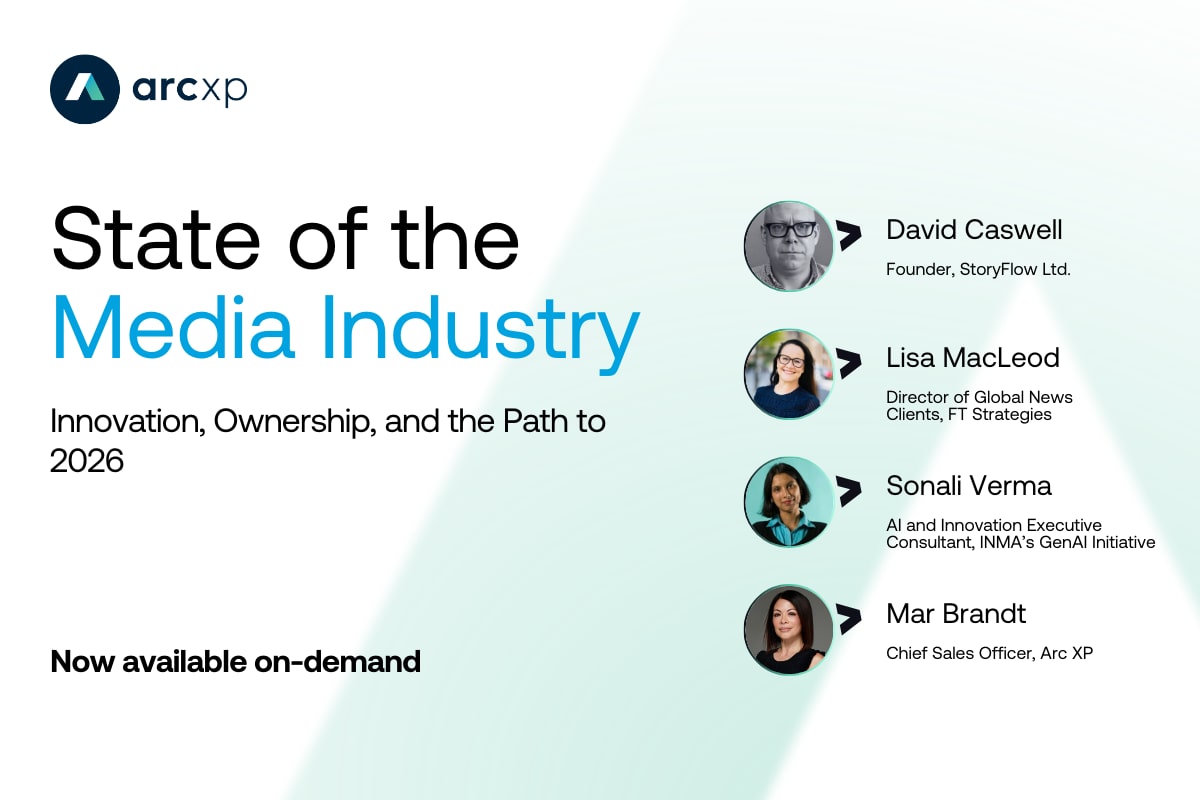Direct vs Organic vs Referral: Diversifying Publisher Traffic in 2024

Traffic isn’t just a buzzword in online publishing; it’s the oxygen fueling your digital presence. The unfortunate reality for many publishers in 2024 is declining traffic. According to a report from Digiday and Arc XP titled “State of Publisher Traffic: Framing the Evolution and Impact of Search and Referral,” 53% of publishers predict that diversifying traffic sources will be the most important tactic in improving site traffic. By diversifying your traffic sources, you not only mitigate risks associated with relying too heavily on one channel but also tap into new opportunities for audience engagement and revenue generation.
To effectively navigate the digital space and counteract this decline, publishers must grasp the nuances of direct, referral, and organic traffic. The truth is, not all traffic is created equal and understanding the different types of traffic is crucial for optimizing your digital presence and ensuring sustainable growth. In this article, we’ll explore these primary types of traffic, examining their strengths and weaknesses, and how each type of traffic fits into your overall strategy.
1. Direct Traffic
Publishers can no longer rely on search engines for consistent traffic. Publishers who solely rely on search engine optimization (SEO) tactics are at the mercy of algorithm changes and user behavior shifts. To establish a robust traffic foundation and combat decreasing search traffic, 56% of survey respondents have begun increasing direct traffic efforts, including various sources such as email newsletters and owned podcasts.
Direct traffic refers to visitors who land on your website by directly typing your URL into their browser or clicking on a bookmark. These individuals bypass search engines and external links, demonstrating a strong connection to the brand. Direct traffic is like the loyal customers who walk straight into your store without needing directions. It’s often a sign of brand familiarity and trust. Understanding direct traffic is crucial for gauging brand recognition and the effectiveness of offline marketing efforts. It forms a core part of the overall traffic strategy, attracting engaged users actively seeking content or products.
Pros:
- Brand Loyalty: Direct traffic indicates a strong connection between users and your brand. Visitors often come directly because they are loyal customers or have a high level of trust in your brand.
- Brand Recognition: High levels of direct traffic can signify effective offline marketing efforts and overall brand recognition. When users remember your URL or bookmark your site, it’s a testament to your brand’s visibility and memorability.
- Engagement: Direct traffic tends to be highly engaged. These visitors are actively seeking your content, which can lead to longer time spent on your site and higher conversion rates.
- Independence from Algorithms: Unlike organic search traffic, direct traffic is not influenced by search engine algorithms. This provides a level of stability and predictability in your traffic sources.
Cons:
- Limited Growth Potential: Direct traffic is primarily dependent on brand recognition and loyalty. It may be challenging to significantly increase direct traffic without substantial investment in brand-building and marketing efforts. Growing direct traffic requires significant investment in brand-building and marketing efforts, making it a long-term game.
- Difficulty in Attribution: It can be challenging to attribute direct traffic accurately. Without clear referral sources, it’s difficult to track the effectiveness of specific marketing campaigns or channels.
- Vulnerability to External Factors: While direct traffic is less susceptible to algorithm changes, it is still vulnerable to external factors such as changes in consumer behavior or market trends.
- Potential for Stagnation: Over-reliance on direct traffic can lead to complacency in marketing efforts. Without diversification, there’s a risk of stagnation or decline in overall traffic levels.
2. Organic Traffic
Despite its unpredictability, organic search remains a significant method for driving visitors to your website. Search traffic serves as a revenue driver, with all survey respondents stating that it was moderately to very significant to their annual outcomes.
Unlike direct traffic, which comprises visitors who directly search for your brand, organic traffic consists of users who discover your website through search engine results pages (SERPs). It reflects genuine user intent, as individuals enter specific keywords to access relevant information.
For publishers, securing prominent placement in search results signifies trust and authority, driving website visibility and credibility. To effectively use this method, publishers must strategically optimize content for SEO, ensuring relevance, timeliness, and accuracy to meet the demands of a competitive digital space.
Pros:
- Highly Targeted Audience: Organic traffic delivers a highly targeted audience to news publishers, as users actively seek out information related to their interests or inquiries, ensuring relevance and engagement with the content.
- Long-term Sustainability: Well-optimized news content can attract consistent organic traffic over time, providing a sustainable source of website visits without the need for ongoing promotional efforts or financial investment.
- Cost-Effective: Unlike paid advertising, organic traffic doesn’t require continuous financial investment once achieved, making it a cost-effective means of reaching and engaging with audiences over the long term.
Cons:
- Algorithm Dependency: News publishers are vulnerable to fluctuations in search engine algorithms, particularly Google’s, which can impact search rankings and organic traffic levels, necessitating continuous adaptation and optimization efforts to maintain visibility.
- Intense Competition: The competitive nature of the news industry means that publishers must contend with numerous outlets vying for top positions in search results, requiring ongoing optimization and vigilance to maintain and improve search rankings.
- Declining Reliability: Recent trends suggest that organic traffic may be becoming less reliable for news publishers, as search engines prioritize paid and featured snippets over traditional organic results, posing challenges to maintaining consistent traffic levels.
3. Referral Traffic:
Referral traffic represents another vital avenue for news publishers to drive website visits and expand their audience reach. Similar to search traffic, referral traffic plays a significant role in annual revenue for most respondents, with 98% rating it as moderately to very significant. Unlike organic/search traffic, which originates from search engine results pages, referral traffic comes from external sources such as other websites, social media platforms, and online forums. This traffic encompasses visits from users who discover news articles, reports, or analyses through sources like social media shares, backlinks from other websites, or mentions on online forums and communities. Engaging with relevant communities, fostering partnerships with other publishers, and creating shareable content are essential strategies for maximizing referral traffic and expanding audience reach in the competitive digital landscape.
Pros:
- Diversification of Traffic Sources: Referral traffic offers news publishers the opportunity to diversify their sources of website visits, reducing dependence on search engines and reaching audiences through alternative channels such as social media, news aggregators, and industry partnerships.
- Potential for Virality: Referral traffic can surge rapidly if news content gains traction on social media platforms or is shared widely by influential websites or individuals, leading to increased visibility, engagement, and brand awareness.
- Quality Backlinks: Referral traffic often results from inbound links from reputable websites, blogs, or social media profiles, providing valuable backlinks that can improve the publisher’s search engine optimization (SEO) efforts and overall website authority.
Cons:
- Less Predictable: Unlike organic/search traffic, which can be influenced through strategic SEO tactics, referral traffic can be less predictable and more susceptible to external factors such as social media algorithm changes or the whims of external websites.
- Variable Quality: While referral traffic can bring in new visitors, not all referral sources are equally valuable. Some may generate high-quality, engaged users, while others may result in low engagement or high bounce rates, requiring careful analysis and optimization to maximize effectiveness.
- Dependency on External Platforms: Relying heavily on referral traffic from social media platforms or third-party websites can expose news publishers to the risk of sudden changes in platform policies, algorithms, or user behavior, potentially impacting traffic levels and audience engagement.
While each type of traffic offers unique advantages, diversification is the key to long-term success. By cultivating a healthy mix of direct, referral, and organic/search traffic, publishers can mitigate the risks associated with over-reliance on any single source.
The digital space is constantly changing, and adaptability is paramount. Stay proactive, experiment with different traffic generation strategies, and above all, prioritize building meaningful connections with your audience across multiple channels.
Recent resources





